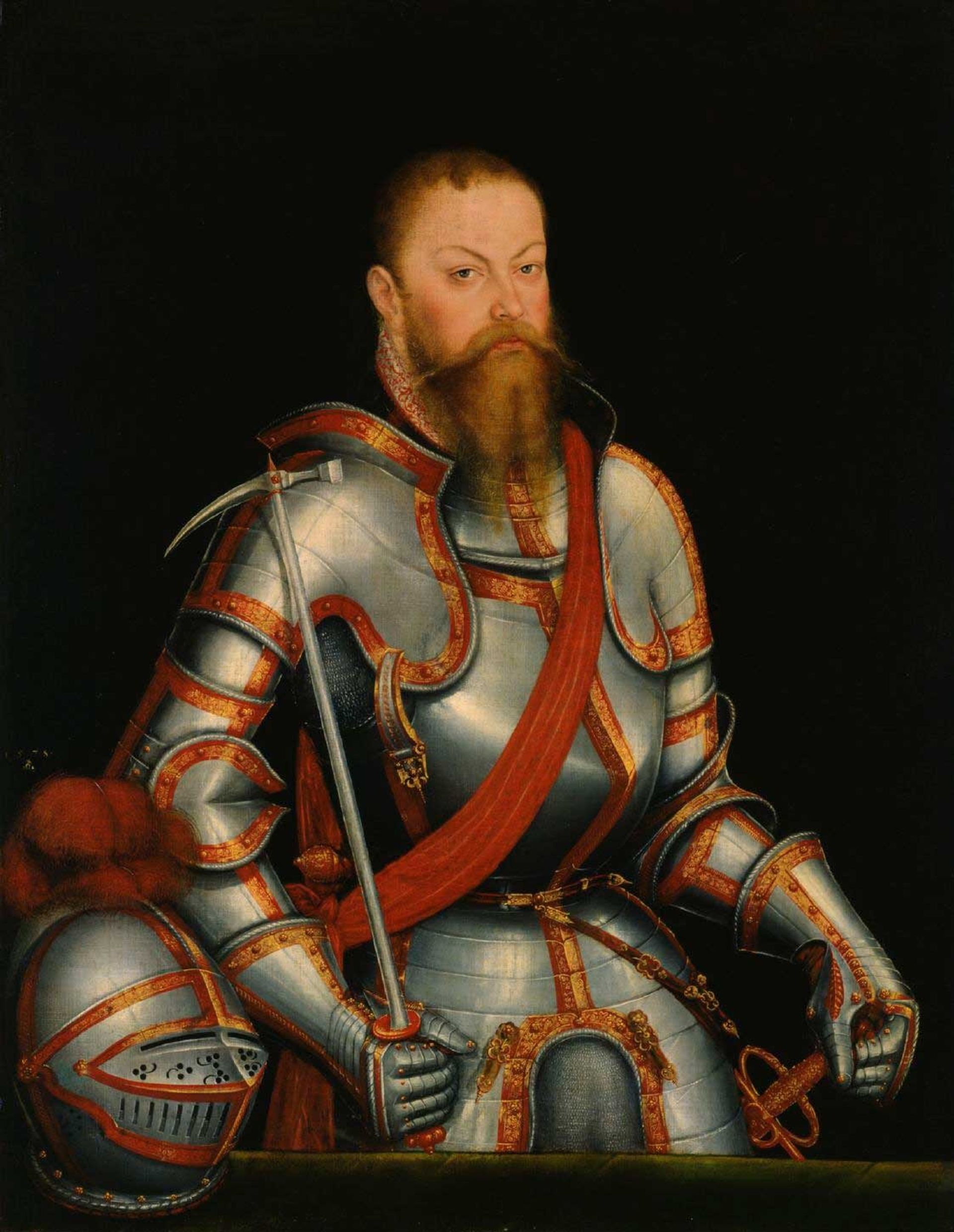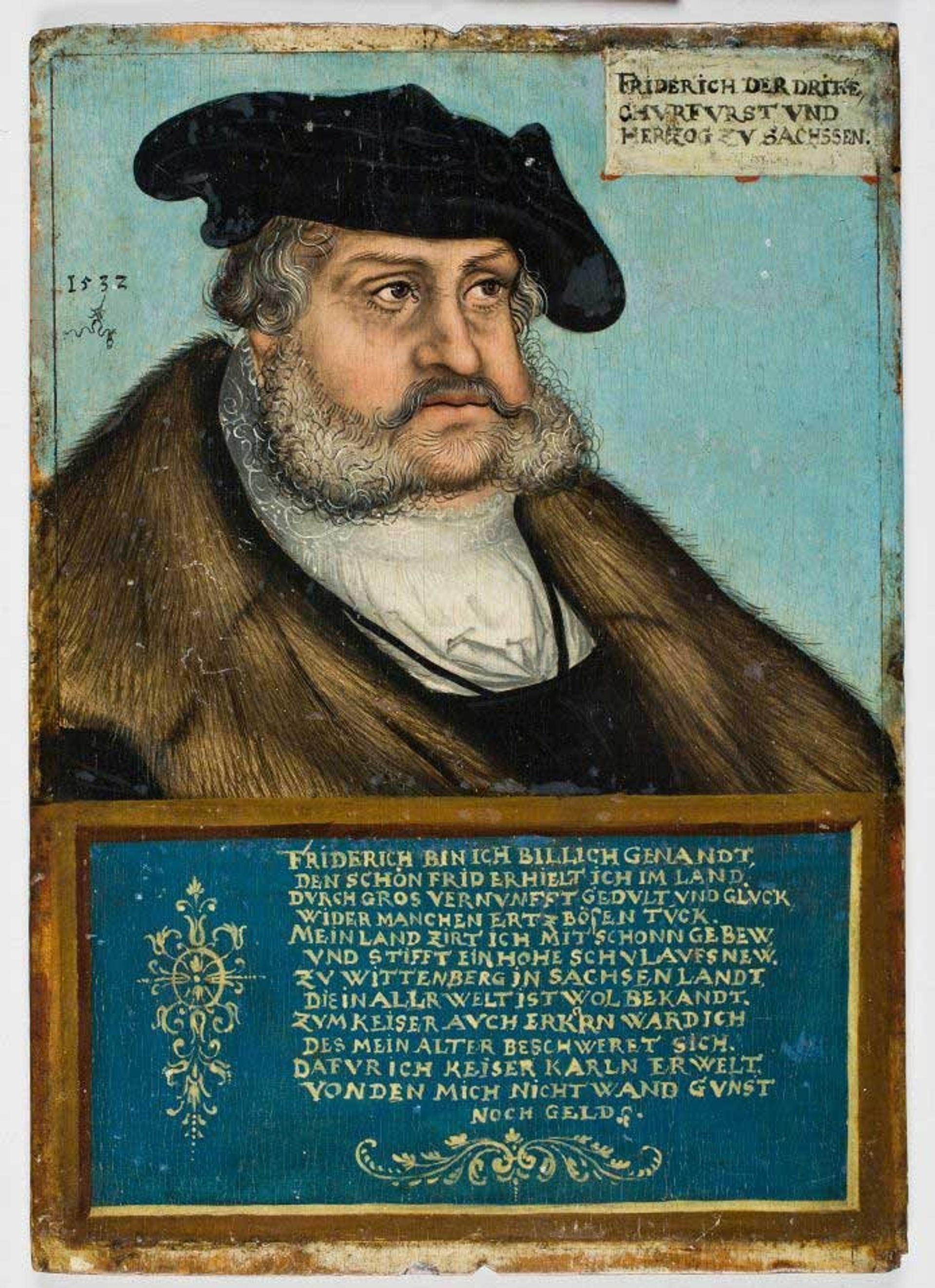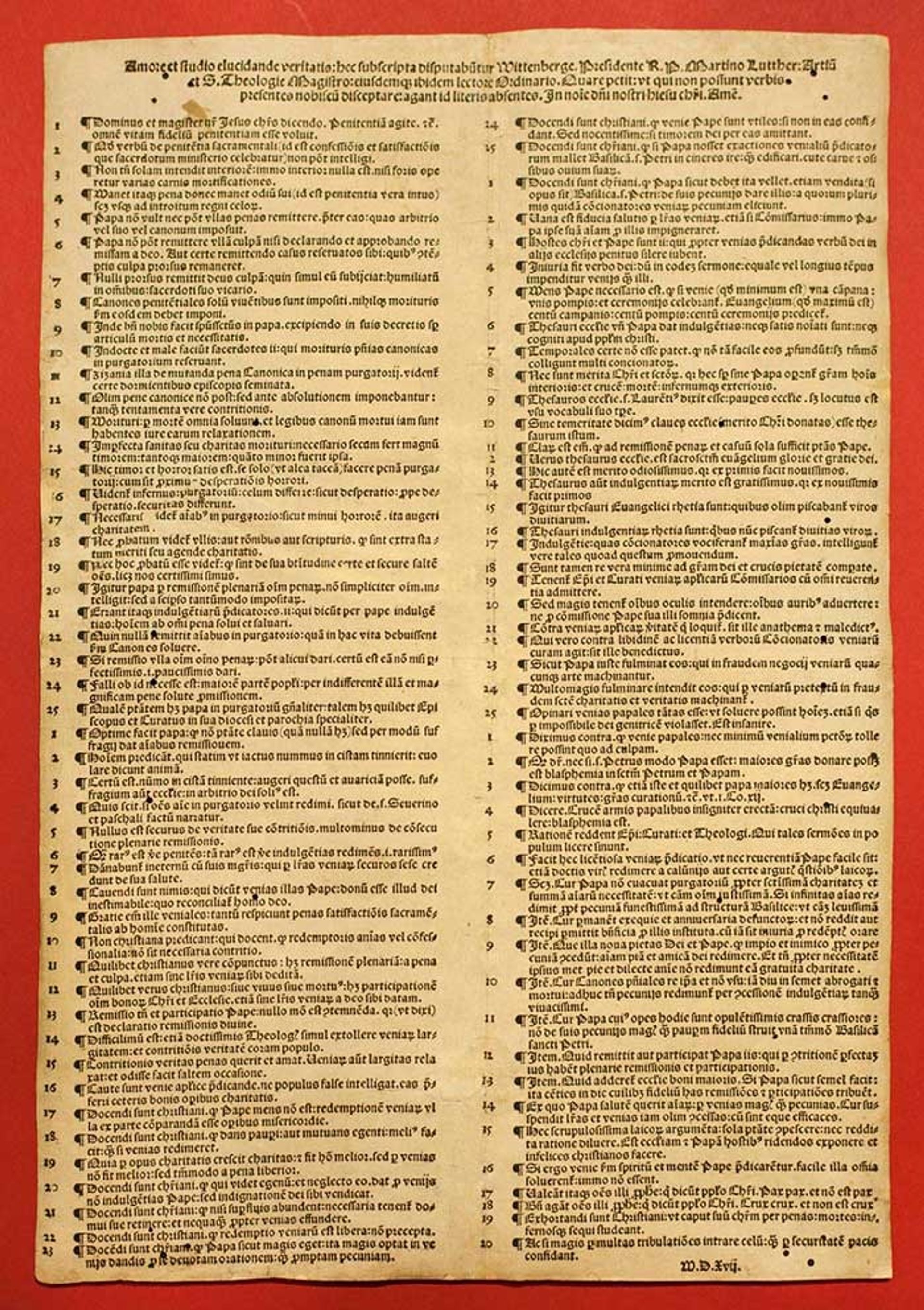To make their presences felt and to pursue their interests (mainly hunting), the princes of the Holy Roman Empire regularly moved around their dominions and in this the Wettin Electors of Saxony followed the convention. In addition to their Thuringian castles in Weimar, Eisenach and Gotha, they also held sway in Saxony mainly through their castle, Hartenfels, in the village of Torgau in Saxony.
On a hill above a bend on the Elbe, Torgau has been untouched—incredible to say— by war and unscarred by industrialisation; it retains such a late-medieval aspect that it can be believed that it would be recognisable to Luther today, not least the imposing Hartenfels Castle, which has undergone extensive work to restore it to the early Renaissance splendour effected in the 1530s and 1540s by Luther’s great advocate, the Elector Johann Friedrich I “the Magnanimous” (1503-54).

As part of the Luther Decade, the State Art Collections of Dresden (Staatliche Kunstsammlungen Dresden, SKD), in collaboration with the state (Land) of Saxony, the district of North Saxony (Nordsachsen) and its capital town, Torgau, present Luther and the Princes: the Public Portrayal and Self-Image of Rulers in the Age of Reformation (until 31 October) in Hartenfels Castle and the Chancery. The idea of the exhibition is to show that, although the Reformation was initiated by Luther and his fellow Wittenberg theologians, it would never have had the success that it did without the support of the territorial princes of the Holy Roman Empire, especially the electoral dukes of Saxony, the foremost laymen of the empire’s electoral college.
Although the essential structures of the Lutheran state church were conceived in Wittenberg, they were implemented in Torgau: the administrative and supervisory centre, the chancery, was created here, as were and the formularies of belief and parish regulation. These, in turn, formed the basis of the Confession of Augsburg (1530), the heart of Lutheran belief, and a catalyst for the Peace of Augsburg (1555) that provided a formula (cuius regio, eius religio: the prince’s religion would be the establish religion of his domain) to end the religious wars in the empire.

The story of the Reformation—from Pope Leo X’s 1515 declaration of indulgences offered for donations to the rebuilding of St Peter’s basilica to the Union of Torgau in 1591—is laid out in eight galleries in Hartenfels Castle. The political convulsions of the Reformation are the principal interests and, in addition to Luther as the prime mover, the leading actors are well represented in a series of Cranach portraits: the Elector Friedrich III “the Wise” (1463-1525), Luther’s first patron by Cranach the Elder (1532), and the war-like Elector Johann Friedrich I by Cranach the Younger, who lost the electoral title for fighting the emperor Charles V.
Following Johann Friedrich’s defeat, the title was transferred in 1547 to a distant cousin, Moritz, of the cadet, Albertine, branch of the Wettin dynasty, and with it Hartenfels Castle. Documentation illustrates the evolution of Lutheran belief, including one of the first printed versions of Luther’s 95 Theses and a manuscript of the Peace of Augsburg. Among other historic items is a highly symbolic relic: a richly worked mitre made for the Hohenzollern Cardinal Elector of Mainz, Albrecht of Brandenburg. Albrecht had bought the electorate with massive loans from the Fugger bank and seized on the sale of indulgences (an option, not de rigeur, for the German church; those bishops who took up the offer were allowed to keep a percentage) as a means of repayment. Renaissance princes were not much bothered by their debts, so some of the indulgence money was splashed out on vestments. The rest is history.

Of further interest is the castle chapel, the first church built according to the requirements of the Lutheran liturgies. Construction was inaugurated by the Elector Johann Friedrich I in 1543 and the chapel was consecrated by Luther the following year. There in 1548 the brother of the Elector Moritz, Augustus of Saxony (later Elector, 1553-86) married Anne of Denmark, daughter of King Christian III. The main all’antica portal promises historical delights within, but unfortunately the chapel has been over-restored; the stonework walls are new and the reliefs on the pulpit have been highlighted with day-glo paint. It is used for contemporary Lutheran services and has been tricked out with those now ubiquitous stripped-pine furnishings that draw their inspiration from Ikea. The Electoral Apartments, developed by Johann Friedrich in 1544, are in the process of refurbishment and will shortly open to the public. As a Disney-historical touch, two bears, coyly named Martin and Katharina, have been installed in the moat.
The chancery, just outside the castle gates, is dedicated mainly to the documentary history of the Reformation: seals, coins, medals, medallions, charters, decrees, liturgical publications, inventories and so on. Correspondence and publications reveal the edgy relationship of Luther to the Dutch humanist and Catholic Erasmus and, in contrast, with the smoother workings between the great Reformer and his colleague Philip Melanchthon. This part of the exhibition also displays manuscript and print items that illustrate Luther’s translation of the Bible, his influence on German language, family life and the Protestant exploitation of print as a means of propaganda.

Special credit goes to Dirk Syndram, the SKD’s curator who, with his departments, oversaw the great refurbishments of the Green Vault (2006) and the galleries of the Armoury Collection (2010 and 2013), for the combination of scholarship and flair that make this an outstanding exhibition in an incomparable setting. Although the state, the state art collections and, above all the sponsors, the Leipzig Sparkasse, have made a massive investment not only in this exhibition, but in Torgau itself as a tourist destination, the town is nevertheless not easy to get to. It is about two and half-hours by train from Dresden. There is no motorway between the two, but B roads take one through restful hamlets and a rich agricultural and viticultural landscape alongside the Elbe. Vaut le voyage.
Donald Lee is the literary editor of The Art Newspaper.
Luther and the Princes: the Public Portrayal and Self-Image of Rulers in the Age of Reformation, Hartenfels Castle, Torgau, until 31 October

